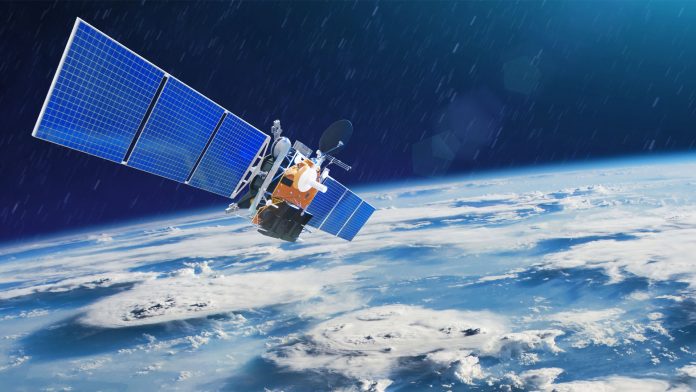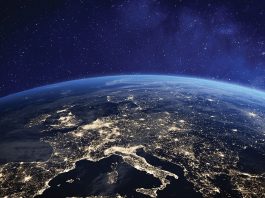The Innovation Platform speaks to Chief Executive of the European Defence Agency, about his time at EDA, the importance of co-operation between EU Member-States.
After serving a term of five years, Chief Executive Jorge Domecq will depart from the European Defence Agency (EDA) on 31 January 2020. During Domecq’s leadership, the EDA expanded its activities considerably across the areas of capability development, research and critical enablers. Domecq also successfully oversaw adaptations in the EDA’s activity portfolio to reflect changing threats (hybrid warfare) and new emerging technologies (such as 3-D printing, cyber and Artificial Intelligence). Within his mandate, EDA’s co-operation with industry and its relations with EU institutions and agencies, other organisations such as OCCAR, ESA and NATO have considerably developed.
The Innovation Platform speaks to Domecq about his time at EDA, the importance of co-operation between EU Member-States, and the challenges that come with making the best out of the new EU defence instruments.
How can EDA and ESA benefit from closer co-operation and information sharing? What joint projects can we expect to see in the future?
It is crucial that all space actors in Europe work closely together, including EDA. We signed a co-operation agreement with ESA in 2011 which serves as a framework for our fruitful and expanding relationship. Let me mention three interesting topics on which we are already working on, such as Unmanned Maritime Systems (UMS). Here, we do a joint study assessing the technical and business viability of potential services based on space and UMS that could support operational activities such as the protection of critical maritime infrastructure or maritime surveillance and explore the combination of UMS and space technologies in terms of service provision as compared to other existing technologies. Governmental satellite communication (Govsatcom) is another promising domain for EDA-ESA co-operation. Here we aim to maximise synergies between our respective activities. EDA’s activities focus more particularly on operational aspects and on the acquisition and implementation environment for Govsatcom via the Agency’s Pooling & Sharing demonstration project whilst ESA has strong expertise in the technical implementation of Satcom capabilities. Then finally, Earth Observation. We conducted a joint study with ESA which elaborated users’ mission needs and identified potential solutions for future security Earth Observation missions.
Another area where EDA and ESA co-operation since 2014 is the growing challenge of defending space and space assets against cyber threats. We jointly researched cyber threats to space missions and assessed the question of how to counter them. We also supported ESA in defining the requirements for the cyber ranges that ESA built in Redu/Belgium and with which it joined the Cyber Ranges Federation that EDA has established together with 11 Member States. More follow-on activities are currently under discussion.
In addition to that, the co-operation among the two organisations is expanding. No later than January of this year, EDA and ESA agreed to launch two new promising projects: one on the use of drones for the monitoring of disaster-stricken regions or toxic spill sites; and another on making use of Artificial Intelligence to navigate across the surface of asteroids or other terra incognita.
Should EU Member States do more to co-operate with each other and with the EU’s institutions on space and defence in the future?
The short answer is yes! There clearly is a need for more European co-operate, both in defence and space which are inevitably becoming more intertwined. We are already well on track in the defence domain, with all the progress made in recent years, especially since 2016 when the new EU Global Strategy set a new, much higher level of ambition on security and defence.
Since then, we have set up unprecedented EU defence co-operation tools: the Coordinated Annual Review on Defence (CARD), the Permanent Structured Cooperation (PESCO), and the European Defence Fund EDF). If Member States use them correctly, those instruments will lead over time to a more structured joint EU planning framework that will enable systematic co-operation, from investment and capability development to the joint operational use of those capabilities. In a nutshell, this means that Member States and their Ministries of Defence will be able to spend their defence budgets much more effectively, in complementarity with NATO. It will also enhance the competitiveness of the EU’s defence industrial and technological base. All in all, it will improve the Union´s ability to tackle security threats more effectively.
Now, does this mean we have done our homework and can now lean back? Not at all. The creation of the tools was only the first step. We now need to take further bold steps in the next five years or so towards a more capable European Union in defence. In particular, Member States must use the new tools and embed them into their national defence thinking and planning. This requires a true change of mindset in capitals.
As you are reaching the end of your tenure now, what would you say have been your biggest successes/the biggest successes of the EDA during your time at the helm? What piece of advice would you offer to your successor?
I had the honour and privilege of serving at the Agency during a particularly busy and thrilling time span which, I hope, will later be looked back at as a defining moment for the Europe of defence. As I mentioned before, the EU Global Strategy published in 2016 set a new level of ambition for defence cooperation and, importantly, put EDA right in the centre of it when it explicitly called on Member States to use its ‘full potential’. Today, the Agency plays crucial roles in the running of all EU defence tools, from the Capability Development Plan (CDP), for which EDA is the architect, to CARD and PESCO for which it acts as the secretariat, and also the EDF. I think this was a major achievement: to establish EDA as indispensable actor in the newly created EU defence co-operation framework.
Another key achievement was the Agency’s Long Term Review in 2017 when Member States reinforced EDA’s role and mission as:
- The main capability prioritisation instrument at EU level;
- The preferred hub for European defence co-operation;
- The central operator with regard to EU funded defence-related activities; and
- The interface to the European Commission and other EU bodies when it comes to represent the military view in other EU policies.
This was an important recognition of EDA as the main defence co-operation platform in Europe. Besides that, we managed to expand the Agency’s project portfolio considerably and to make EDA more solid, administratively sound and accountable. I leave an Agency that is fit for purpose!
In terms of advice to my successor, I don’t think this would be appropriate because his or her challenges will to a large degree depend on the place and role Member States will want to give to EDA in the future, especially in the future development of the aforementioned tools (CARD, PESCO, EDF). However, to some extent, the exact scope of this role is still open or vague, especially as regards the EDF.
This being said, I see two main challenges when it comes to making the best of the new EU defence instruments. First, all three must be implemented in a manner that is efficient and coherent and based on the new European Capability Development Priorities agreed by Member States in 2018. Here, EDA has a key role to play as the guardian of coherence between the actions taken under CARD, PESCO and the EDF. Second, the tools must also be used by Member States in their national defence thinking and planning. This is absolutely crucial because if the EU instruments are not truly embedded in national capability development and procurement structures, they won’t have any impact on the European defence landscape which we want to become more coherent, interoperable and efficient, and this would be an enormous waste.
Jorge Domecq
Chief Executive
European Defence Agency (EDA)
Tweet @EUDefenceAgency
https://www.eda.europa.eu/
Please note, this article will also appear in the first edition of our new quarterly publication.









